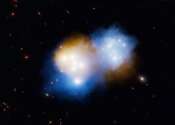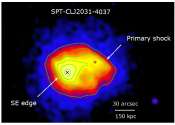Image: Hubble spies diminutive galaxy IC 3430 in the constellation Virgo
This NASA/ESA Hubble Space Telescope image reveals the subtle glow of the galaxy named IC 3430, located 45 million light-years from Earth in the constellation Virgo. This dwarf elliptical galaxy is part of the Virgo cluster, ...









